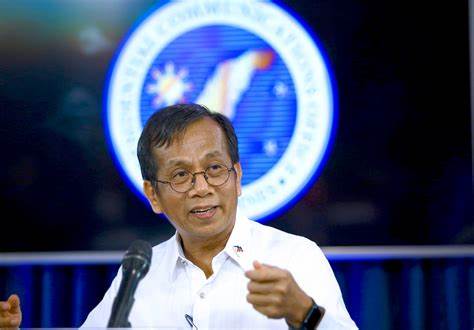The government acknowledged the deceleration of the country’s economic expansion, reporting that the Gross Domestic Product (GDP) grew by 4.0 percent in the third quarter. This brings the year-to-date average to 5.0 percent, which falls below the official target range of 5.5 to 6.5 percent.
National Statistician and Undersecretary Dennis Mapa reported the figure, prompting the government to emphasize the urgency of addressing core challenges and strengthening the foundations for a rapid, sustained, and inclusive growth trajectory.
The economic slowdown was attributed to a confluence of supply- and demand-side factors:
Supply Side: Weaker growth in the services and industry sectors was observed. Notably, public construction saw a sharp contraction due to stricter validation measures for civil works and delayed billings resulting from new requirements for government projects.
Demand Side: Household consumption growth slowed to 4.1 percent. This was primarily driven by widespread cancellations of school, work, and travel activities caused by successive typhoons. Furthermore, consumer confidence may have been affected by discussions on government spending, leading to the postponement of major purchases. We also note a lower disbursement of conditional cash transfers compared to the previous quarter.
“The third quarter’s performance reminds us of the urgent need to strengthen our foundations. These trends provide a clear signal for the government to act boldly and decisively,” a statement from the Economic Planning team said.
In response to these challenges, the government is implementing strategic interventions focused on bolstering investor confidence, restoring consumer trust, and accelerating key projects.
- Fast-Tracking Disaster Response and Recovery
The official declaration of a national state of calamity grants the government immediate authority to:
Access emergency funds more quickly.
Control the prices of basic goods.
Fast-track relief, rehabilitation, and recovery operations.
The focus is on the timely release of conditional cash transfers, disbursement of Calamity and Quick Response Funds, and the rapid rehabilitation of damaged infrastructure in severely impacted areas.
“We are prioritizing social protection, affordable services, and job creation to ensure an inclusive recovery. While we may not fully recover the economic losses this year, we believe these are temporary setbacks. With sustained interventions, we expect the economy to rebound in 2026.”
- Strengthening Trade, Tourism, and Digital Services
To bolster external demand, the government is aggressively pursuing Free Trade Agreements with key partners, including the UAE, Chile, the EU, and Canada, alongside the full implementation of the Regional Comprehensive Economic Partnership (RCEP).
Key initiatives also include:
Tourism: Expanding eVisa access and promoting diverse experiences, such as Muslim-friendly, sports, and food tourism.
Digital Economy: Ramping up efforts in Business Process Outsourcing (BPO) to enable the shift toward higher-value services and digital skills, supported by the full implementation of the Konektadong Pinoy Act to improve internet accessibility and affordability.
- Improving Public Spending and Project Execution
To address the slowdown in public construction and spending, all government agencies are being called upon to prioritize underutilized programs and expedite the utilization of the 2025 national budget.
Commitment to transparency is being reinforced through digital tools, including the Modernized PhilGEPS Open Data Portal and the Digital Imaging for Monitoring and Evaluation (DIME) Project. Filipinos are encouraged to report delays or irregularities through platforms like Sumbong sa Pangulo.
- Reforms to Economic Governance
The government is working closely with the Legislative-Executive Development Advisory Council (LEDAC) to ensure the enactment of priority legislation under the Common Legislative Agenda (CLA). These structural reforms are designed to enhance transparency, improve budget execution, and fight corruption:
Anti-Corruption: Amendments to the Bank Deposits Secrecy Law and the Anti-Money Laundering Act to strengthen financial transparency and enforcement.
Good Governance: A measure to disqualify relatives of public officials (up to the 4th degree) from participating in government contracts, preventing conflicts of interest.
Long-Term Planning: The proposed Masterplan for Infrastructure and National Development.
The government remains optimistic, citing strong macroeconomic fundamentals, a young and resilient workforce, and a clear reform agenda. The commitment is firm: to rebuild investor confidence and restore public trust toward inclusive, transformative economic growth.




